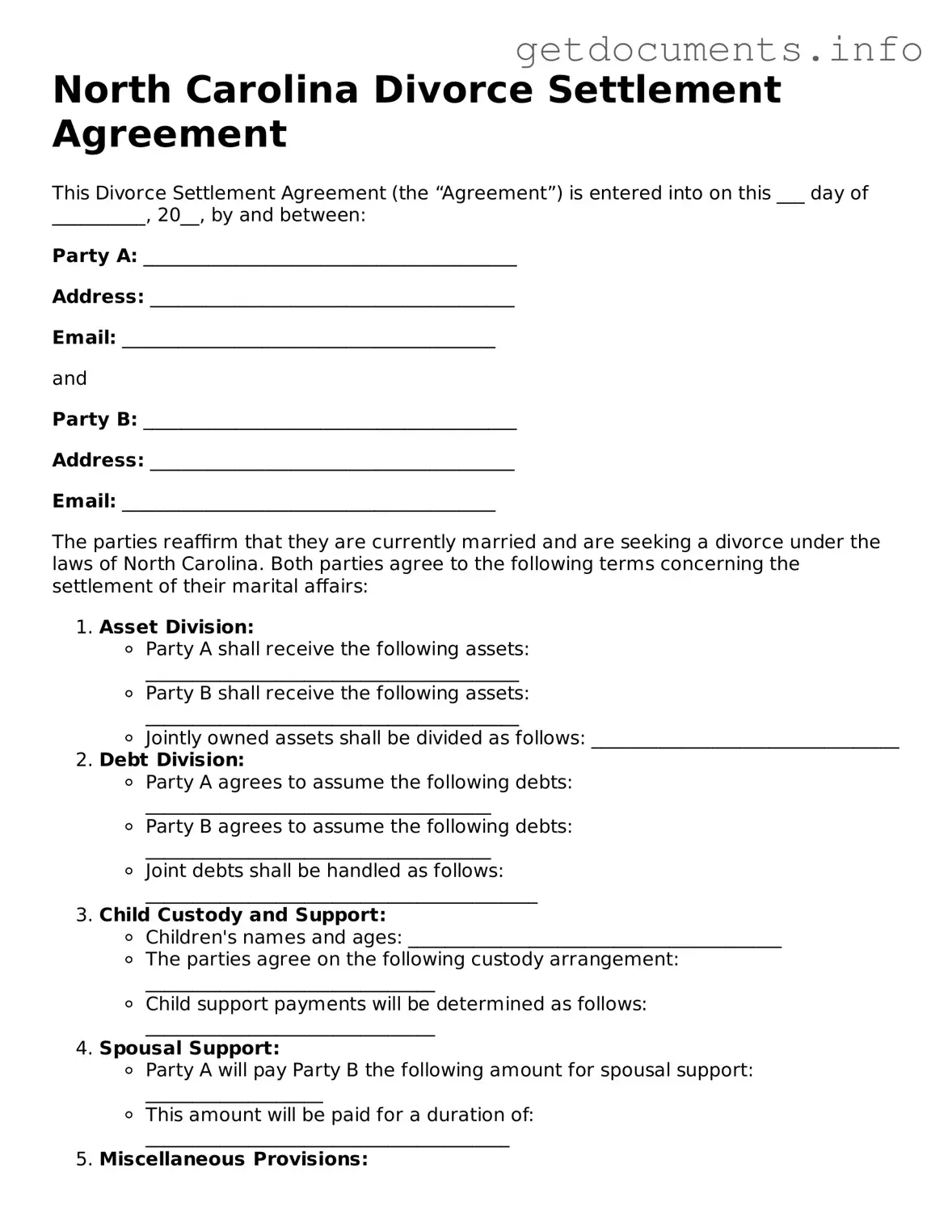Free Divorce Settlement Agreement Template for North Carolina
The North Carolina Divorce Settlement Agreement form serves as a crucial document that outlines the terms and conditions agreed upon by both parties during a divorce. This legally binding agreement addresses various aspects, including property division, child custody, and support obligations. Completing this form accurately is essential for ensuring that both parties understand their rights and responsibilities.
To begin the process, consider filling out the form by clicking the button below.
Access Divorce Settlement Agreement Editor
